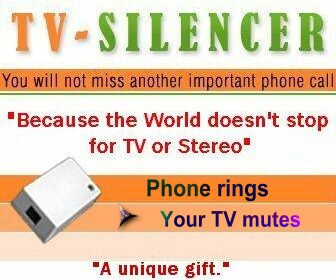|
Your Home Office, Your Way
Your Home Office
Congratulations! You’re finally are in a position to demand the corner office with the view and you’re down to a 15-second commute. Ask yourself: o What tasks need to be done? o What equipment is required? o What materials need to be stored? o Will you have outside visitors? o Will you be video conferencing? Common Mistakeso Settling for a sub-standard desk and chair – you’ll probably be spending a lot of time at your desk. The wrong desk and chair will contribute to fatigue and can cause neck, back and shoulder pain. Your chair should adjust for height, as should armrests. Carpal tunnel syndrome and other repetitive movement injuries can eventually lead to time off work, so invest in wrist rests, an adjustable keyboard, and elevated footrests to keep the pain level low and productivity level high. TIP: If you’re buying a new desk for your home office, opt for one with lots of drawers and cubbyholes to tuck stuff out of sight. o Keeping too much paper – storing paper takes up tons of room and makes information harder to find. (Just make sure you back up files regularly – I back up my files every day, just before I turn out the office light.) Ditto keeping too many supplies on your desk instead of in storage. NOTE: I've found a very nifty product that saves tons on ink and boosts printing efficiency, both to paper and PDF electronic documents. Check out
Fine Print
o Cord and wire spaghetti that makes it awkward to work and contributes to trip-and-fall accidents. Typical building codes require electrical outlets every 12 feet. It may be worth the money to install more outlets in your home office and, if you decide to, I recommend installing them above desk level so you don't have to crawl around on the floor to deal with peripherals like printers and scanner. Make sure phone jacks are close to electrical outlets for equipment that requires both. o Underestimating the impact of noise and distractions - when planning your home office, consider privacy and noise issues. In a pinch, headphones can be useful, but who wants headphones on all the time. Better sound-reduction strategies include rugs and wall-to-wall carpeting (especially with good padding), double or triple-glazed windows, and solid doors.
Define Your Home Office SpaceTo preserve your sanity and maintain productivity, it’s essential to define a space that is dedicated to your work. Even if it’s small, carve out the space, then get creative about organization and storage solutions to make it work. It’s best if you have a room that can be dedicated to your home office, but if that’s not in the cards, use portable screens to shield your office area from family activities. Better yet, use bookcases as dividers if you can use the extra storage space. Studies say that the average person wastes an hour a day dealing with interruptions, putting out fires, and searching for lost items. Translate that to what that means to your pay check. If you gross $90,000 per year your time's worth $.75 per minute. If you lose 60 minutes each day, it's costing your company $9,000 per year in lost productivity. Discipline yourself (and your family) that when you’re at your desk, you’re off limits for other activities and distractions. I hang a ‘No Interruptions Please! ‘ sign on my home office door to remind everybody when it’s work time. If space is limited, try to reduce the amount of floor space by thinking vertically. o Use stacking drawers and racks with space-saving footprints.
o Use walls for bulletin boards. Mount pencil sharpeners, telephones and fans on the wall to save precious floor or desk space.
o Look up. Ceiling-height shelves compensate well for lack of floor space. Make sure bookshelves are the right depth – unless you need to store a lot of 3-ring binders, a depth of 8” should work. Avoid bookshelves that don’t have adjustable depth shelves, if you can.
o Use hanging jewelery or shoe organizers to stash home office supplies.
o Utilize fold-down furniture such as a card table that can be put away when the space needs to be converted. Be creative. Can you convert that walk-in closet to office space? How about that wasted space under the staircase? If possible, choose a place with a door that you can close against distractions. If you can`t, try to train your family that when you`re in your work space, you`re off limits. (Easier said than done, I know.) If you must work in the open, invest in a set of headphones to help separate yourself from the activity around you.Once you have a place for everything, discipline yourself to keep everything in its place. Clutter is a major enemy when it comes to your productivity and sanity. Maintain a separation between home and work; keep home stuff out of the office and work stuff out of the family space. An organized work space will save time, keep your mind clear, and help keep your anxiety level under control. The LayoutThink of the countless hours you’re going to spend in your home business office space. Put it together right and it will pay major dividends in keeping your stress level down. Design your workspace with yourself (your desk) in the center with your computer on a surface to the left, to the right, or parallel to it. The objective is to be able to perform multiple tasks within reach of your chair. Don’t put your computer or peripherals in the line of heating/cooling vents. The only items that should be on a desk are those that are used several times a day; other frequently used items belong on a shelf mounted above the desk. (Since I sit with my bank toward the wall, I have my shelf mounted on the wall behind my desk and I’ve left enough space that I can swivel my chair around to grab those items when I need them.) Even if you’re on a budget, consider getting a quote from a carpenter for custom built-ins. It might not be as expensive as you think. Colors and DecorDon’t underestimate the psychological power of your surroundings. Your objective is to have a work space that reflects your style and personality – a place you really enjoy spending time in. Color is key. There is tons of science on the psychology of color – how it impacts mood and energy levels, for example. Following is a basic guide: o Red is the color of energy, excitement and appetite. It speeds up heart rate and should be used sparingly in a workspace. o Blues and greens are the cool colors, evocative of peace and relaxation. Blue can actually make a room feel cooler and lull you to sleep - great for a bedroom, not so good for your home business! Green, on the other hand may be an ideal choice. As the dominant color found in nature, green evokes feelings of freshness, balance, harmony, and the organic. In human psychology, green fosters both rest and concentration. With yellow undertones (lime), green is a popular theme for contemporary product branding because it suggests vitality. o Purples, lavenders, and violet shades have been proven to stimulate focus, concentration, and imagination. Touches of these colors are great for your home office. o Black is the color of solidity and sophistication and makes a good accent color for a work space. o Yellow is the most common highlighter color - an attention-grabber. Yellow evokes enthusiasm and optimism but too much bright yellow is overpowering and distracting. Because of its tendency to cause a degree of anxiety, yellow is not a good choice. o White, ivory, tan and shades of grey are neutrals that include subtle variations of color. For most people, these neutrals, coupled with accents that add some energy punch, are the best choice for a home office.
Note: Whatever your paint color preference, make sure the light reflective value (LRV), is no higher than 60%. The LRV is usually on the back of the paint swatch. LightingNatural daylight is ideal - if your space has a window, that’s great. If no daylight is available, you’ll need a combination of general and task lighting. Task lighting is essential for late nights or cloudy days. If your home office is in a basement room without windows, check out daylight-replicating lights that provide energy-efficient, full-spectrum lighting for your work space, preferably with dimmer switches for best control Avoid glare – don’t put overhead lighting sources directly above your computer screen, and to avoid eyestrain, don’t put your computer screen directly in front of a light source. If you must use fluorescent light (very hard on the eyes), opt for the warm bulbs to soften the light. If your work requires that you see true color and you need artificial light, check out the full-spectrum lighting http://www.aviva.ca/shop/product_sections.asp?catid=59 systems available in holistic living catalogs – they’re expensive but may be worth it in the long run.
Equipping Your Home OfficeIf you’re in the market for new equipment, I’ve put together some guidelines that might help sort through o Computer: For about $1,000, you can get a PC with AMD Phenom II 925 Quad-Core Processor, 256MB of memory, a 60GB hard drive, a 17-inch monitor, an HP Pavilion a6704f-b Desktop Computer Bundle with AMD Athlon™ X2 Dual-Core Processor 5400+ And 20.1" Widescreen LCD Monitor plus a CD-ROM drive, a high speed modem and an Ethernet connection. Best places to shop: Dell, Compaq, Gateway, Office Depot, Best Buy. To comparison shop for the best prices, check out CNet'sShopper.com or ZDNet Shopper. o Multifunction machine: For less than $500, (don’t spend less than $250 if you’re looking for office quality), you can buy a machine that can fax, copy and print. Most come with automatic document feeder, a scanner and the ability to print color digital photos. They typically run at print speeds of about 12 pages per minute (ppm) in black and white, 10 in color. o Two-line cordless phone (stick with digital, not analog because analog phones are extremely susceptible to interference and have a limited range – better yet, check out the new DSS technology): High end cordless phones start at less than $200, offering home offices the same full-duplex clarity as a corporate boardroom with a microphone optimized for hands-free, one-to-one phone conversations. A headset can be a big help, especially if you go with VOIP where they help boost sound quality. Consider the assigned radio frequency of the cordless phone you're considering. There are typically three categories: 1. 900 MHz: is the poorest choice because this frequency is crowded with other electrical devices like baby monitors, cell phones and pagers. It has a limited range of less than 1,500 feet. They're cheap though, with prices starting at $20.00. 2. 2.4 GHz: This used to be quite popular, but now this spectrum too is now inundated with wireless networks, microwaves and other appliances. Prices start at about $50.00 and the range is about 2,200 feet. 3. 5.8 GHz: This phone range is available for wireless devices and is not yet as crowded as the others, so interference is minimized. The range on these is about 2,200 feet (same as the 2.4 GHZ and their price starts at around $150.00. Make sure you note the battery life to avoid a potential serious disruption in your business day (most cordless phones allow about four hours of talk time, about seven days in standby mode. Keep a spare on hand and make sure you’re able to replace the battery pack yourself when the time comes. Go from 'Your Home Office' to 'Your Mobile Office'
|


